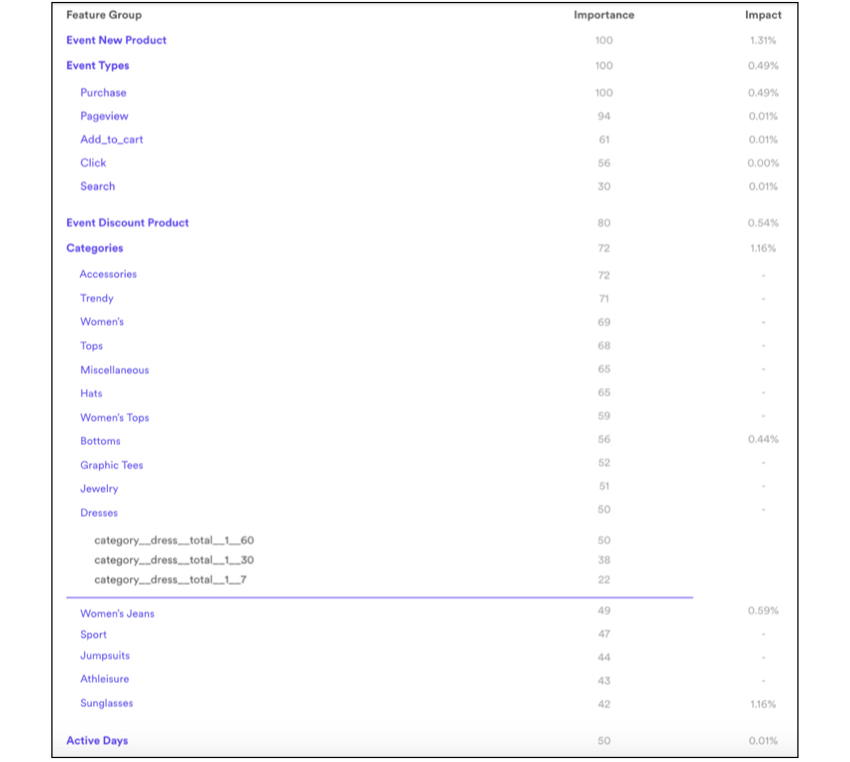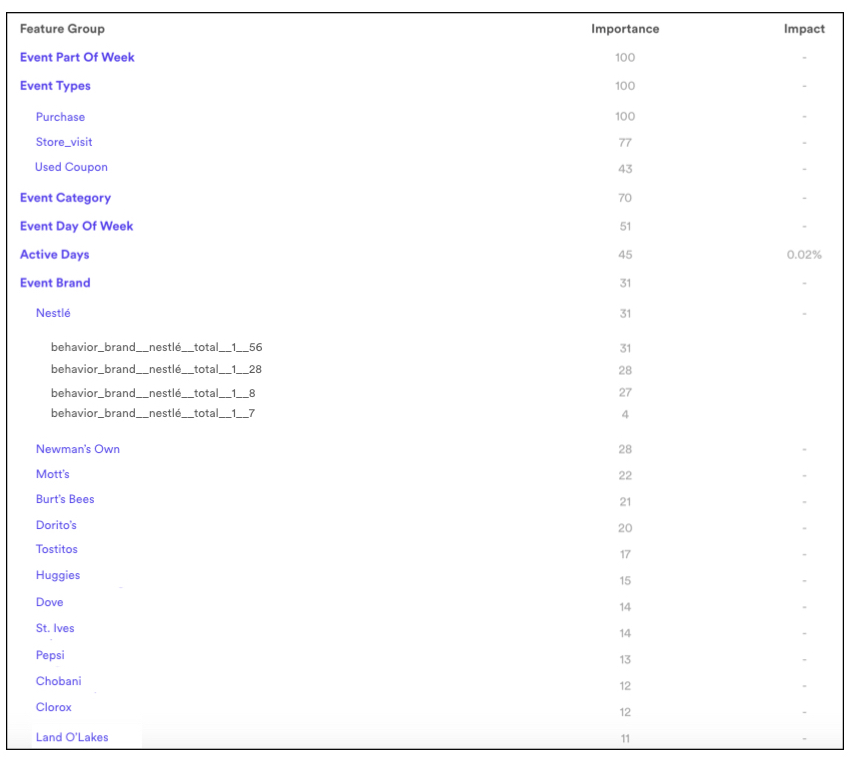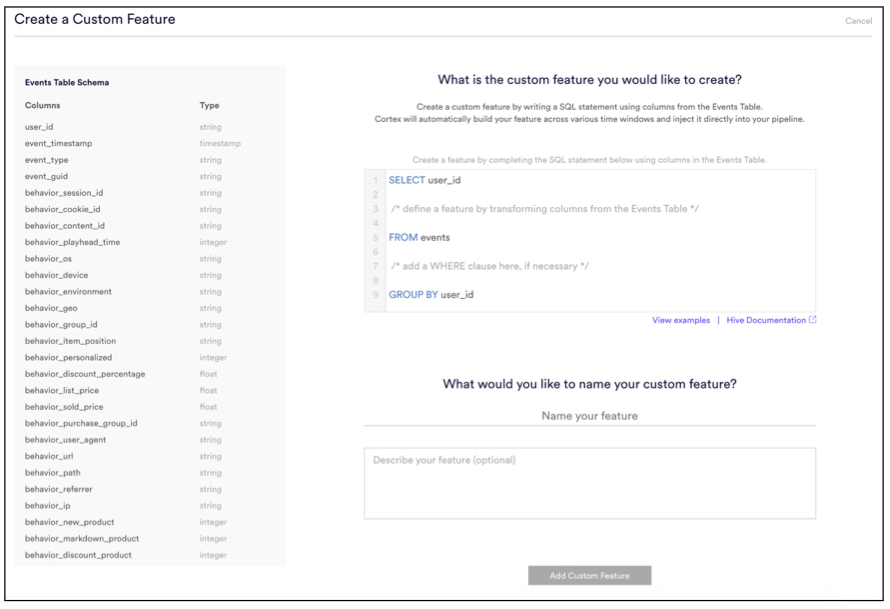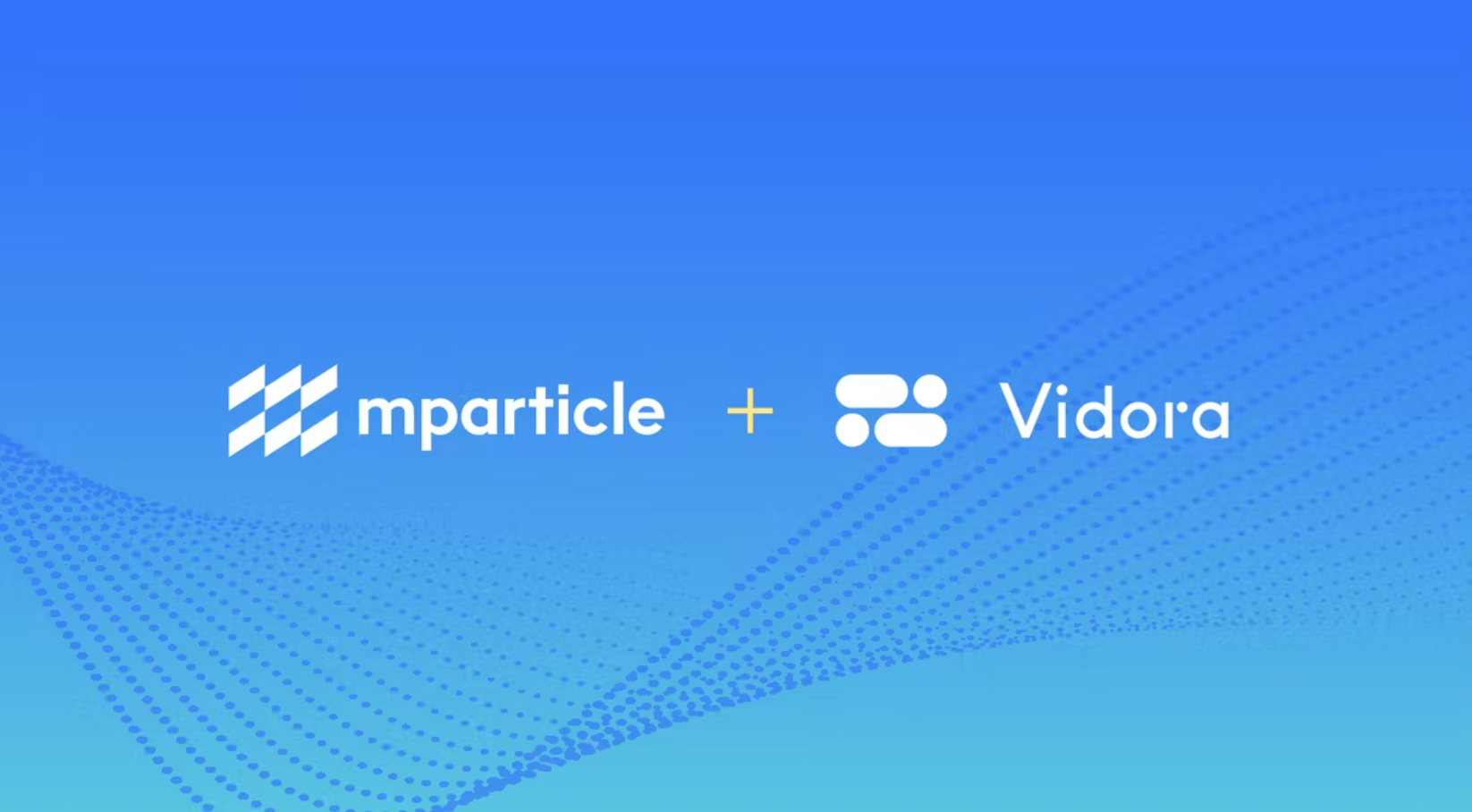
Feature engineering is arguably one of the most difficult aspects of machine learning. Cortex’s simple interface provides our partners with both automated feature engineering techniques and the ability to manually create features.
 – Andrew Ng, Machine Learning and AI via Brain Simulations
– Andrew Ng, Machine Learning and AI via Brain Simulations
Our partners leverage automated and manual feature engineering in order to produce high performing machine learning pipelines.
Automated Feature Engineering
Vidora partners use Cortex to build diverse pipelines ranging across commerce, media, real estate, IoT, and finance. As a result, Cortex has a rich set of feature engineering techniques built into its library. It can automatically generate high quality features for a variety of machine learning problems.
Example – Feature Engineering in Finance
Consider a finance problem where one is looking to understand which users are most likely to default on a loan. There are a variety of events and meta-data that can be used to determine the likelihood of a user defaulting. One prominent feature might be whether a user is increasingly delinquent on payments. Derivative features which assess increases or decreases in delinquency are some of the many features which Cortex creates for problems like these.
Example – Feature Engineering in Commerce
One common challenge in commerce is to predict the propensity of a user to purchase a particular item (i.e. purchase the “batman shirt” or purchase the category “shirt”). In this case, Cortex might generate features highlighting a users activity/purchasing behavior within specific categories.


Custom Feature Engineering
Vidora also provides the ability to create manual features which can augment the automatically generated features. Why would you add manual features? Custom feature engineering allows teams to:
- Interact with and customize machine learning pipelines
- Add features to understand their impact on machine learning pipeline performance
- Increase performance of the automated pipelines by adding features based on a unique understanding of the business
We see numerous instances where teams quickly deploy high quality machine learning pipelines and then augment them with custom features to provide additional performance boosts. This post describes custom feature engineering in more detail.

Summary
Cortex combines automated and custom feature engineering capabilities. As a result, it gives our partners the power to build high quality machine learning pipelines quickly. Both automated and manual feature engineering can be accomplished within a simple UX and is accessible to both technical and non-technical audiences.


